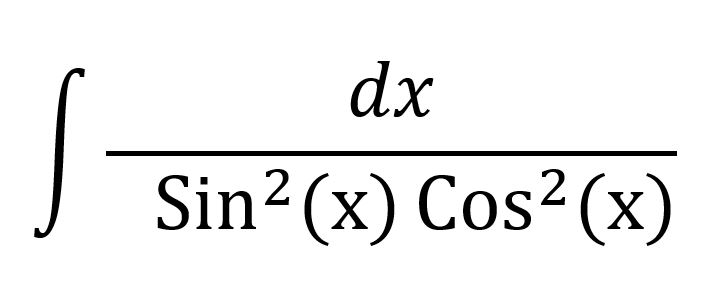A couple of years ago, some of my coworkers started a book club. They went through Killers of the Flower Moon, and a few other trendy books. This is how I became familiar with Fourth Wing. Just recently, Onyx Storm -the third title in the Empyrean series- made it to their hands. As soon as I saw the hardcover in their desks, my brain inevitably began lowering its control rods.
It had been two months since I published my Fourth Wing review, and as I carefully skimmed through the pages, the same question kept wandering my thoughts: “Over half a million reviews combined, sold out in a matter of minutes, people go crazy for this series: is it really that good? Am I missing something?”
The interaction that followed covered many topics, all of which would spin around the Empyrean series’ popularity, a feat I do not reject or disapprove in any way as I explained in my Fourth Wing post. In fact my natural response towards Empyrean is almost of complete indifference -genuine indifference, meaning neither fondness nor dislike- except for my perplexed feelings on how such a standard work has become so streamlined into our society. This indifference prompted one of my coworkers to then ask me: “What book -from pure literature- I would recommend?”
Even though similar in nature but different in output production, I have always found common ground between music, movies and literature. There are artists like Ed Sheeran who capitalize on a wide demographic, and there are artists like Van Der Graaf Generator, who only care on crafting beyond the boundaries of creativity. There are movies like Titanic, the type everyone has to go see just because it has two appealing leads in a straight forward three-arc structure predictable story, and there are movies like Brazil that will fry your brain for using braincells that have been drowsing for most of your life. And then there is the Empyrean series, a cultural phenomenon of the last years. Is it that good? Is it really that good?
Looking back over the years, I do not think I have a particular favorite literature device. It took me a while to answer my coworker’s question, because I have truthfully enjoyed the majority of literature works I have been fortunate to read: Huckleberry Finn, The Trial, Don Quixote, One Hundred Years of Solitude, Crime and Punishment, and it has nothing to do with them being “the classics” of literature. On the contrary, it has everything to do with how compelling is the story the author tells, how developed the characters are, what are the themes touched, what motifs drive the elements, the symbolism contained, how well literary devices are used, and other aspects that make the reading a pleasure to my senses, and not a dull routine obligation to comply with popular trends. This is why it took me a while to state one above the rest as my personal literature work: in essence, I rate them all equally. Take “A Tale of Two Cities” for example.
Widely labeled as not Dickens’ best work, even receiving mixed reviews when first published, and only gaining popularity by the early twentieth century, what I like about it is its depth and the amount of layers it has, as well as how robust and properly differentiated they are. It also helps that it is centered around the French Revolution -one of my favorite historical events-.
MINOR SPOILERS BELOW — Do not proceed if you haven’t read A Tale of Two Cities.
I will be the first to admit that A ToTC is not an easy book to read. The first couple of chapters move fast driven by Jarvis Lorry’s “Recalled to life” mission of rescuing Dr. Manette, but then the pace all goes downhill after that and submerges into full slow motion for an excruciatingly long time. You have to be very patient, as every page feels like an anvil. Especially the first time.
However this mental endurance Dickens puts the reader through is actually where the essence and beauty of the book firmly rests. It is not easy to initially grasp, but all the themes gradually begin taking shape as the story progresses. Character development is embodied through every chapter, rather than by isolated literary construction. There is an almost surgically methodical way in which Dickens creates the feelings of sympathy and revenge in the French side of the story, while growing ambivalence and happiness on the British side. This is one of the many dualities the book carries from its title and even starting on its first sentence: “A tale of two cities”. “It was the best of times, it was the worst of times”. So in case you missed it, duality is the main theme of the book. But what does that mean?
A book’s theme is a central message the author uses as platform for the story that is being told to the reader. A ToTC contains many elements that are a literal or metaphorical representation of duality. The fact that England was living a prosperous time, contrasted against the poverty and oppression France was experiencing. This can also be exemplified by Charles Darnay -a well-established nobleman with a protocoled approach to life- and Sidney Carlson -a nobody who thinks nothing about himself, with an idealistic view to life. The fact that Dr. Manette is a well-educated established surgeon, who can relapse into a small timid human being who can barely communicate, traumatized by his tenure in prison; he, however, can be brought to life again and become a functional normal individual of society by his daughter Lucie. Dr. Manette being brought back to his normal life introduces the subtheme of resurrection, which is a consequence of duality (life vs. death).
There are many other subthemes of course, but resurrection I believe is the one with most important one. I would say justice and revenge are the ones with most exposure, due to the explicit narrative of the events surrounding the story. One of the reasons why I do not like the Star Wars prequel trilogy was specifically how poorly the theme of Anakin’s fall to the Dark Side of the Force was handled. The emptiness of him leaving his mother without any justification of why did not he rescue him during the ten years or so when he had the opportunity, the mindless actions of his futile revenge against the Sandpeople, and his absolute inability to properly judge a mentor from a conman, leads any viewer with common sense to conclude the inevitable: Anakin fell to the Dark Side because he was taken away from his mother for no reason, he was passed over a promotion in his job, and his wife abandoned him when he lost his mind and went crazy. There are worse things that happen to someone in life and people are able to get themselves back up and become stronger. In Anakin’s case, it felt he never should have become a Jedi, and should have been institutionalized instead. A ToTC deals with the same themes: abandonment, resurrection and revenge, however it builds them up in such an effective way, that the reader can easily relate two each one of the characters that manifest the actions of these themes, and this includes minor secondary characters. Whether the reader likes it or not, or whether if they agree with Madame Defarge’s ideals, they fully comprehend the authenticity of her feelings, which is expressed through her knitting. Nothing similar to this occurs in Fourth Wing, and that is why Yarros’ book fails to impress me from a critical perspective: everything is linear and predictable, and the narrative has no depth.
A ToTC on the other hand, holds the reader through every page without any clue on what will unfold next, while maintaining a robust base on its motifs. When Mr. Stryver, Darnay and Carlson, all share their feelings towards Lucie, your initial reaction is to believe there will be a confrontation between them, or a major development to resolve the conflict. However, almost immediately it is revealed that it was all a red herring, and any subplot is discarded as Lucie marries Darnay. The book also wanders for two or three chapters with almost nothing happening at all other than describing’s Lucie and Darnay happy lives, which makes the revelations that come out on the third part stand out even more: Dr. Manette’s origin story, Darnay’s family story. Darnay’s liberation and re-arrest, which leads to his death sentencing. It all works so effectively, because by this time, everything that Dickens has been feeding the reader has now taken form and is now a solid palpable structure in their mind, which all sides visible, tangible, and exposed. Carlton’s sacrifice is perhaps the most beautiful side of the structure.
I do not want to overanalyze the book, as there is plenty of fabric for the reader to work with, so for now I will leave brief exploration as is, summarizing that these are some of the many reasons that make A ToTC a wonderful, thoughtful, and enjoyable read.
HR






